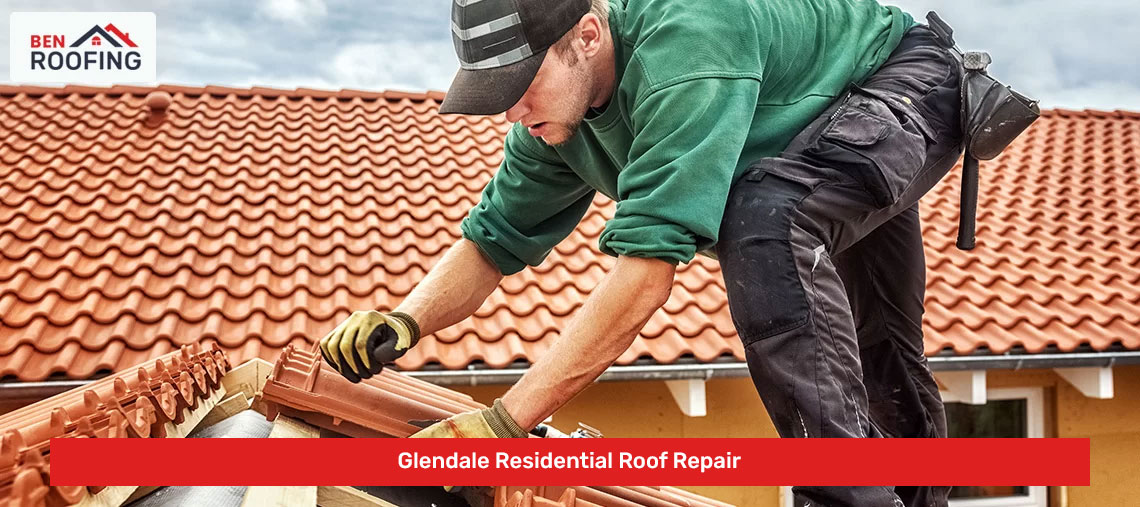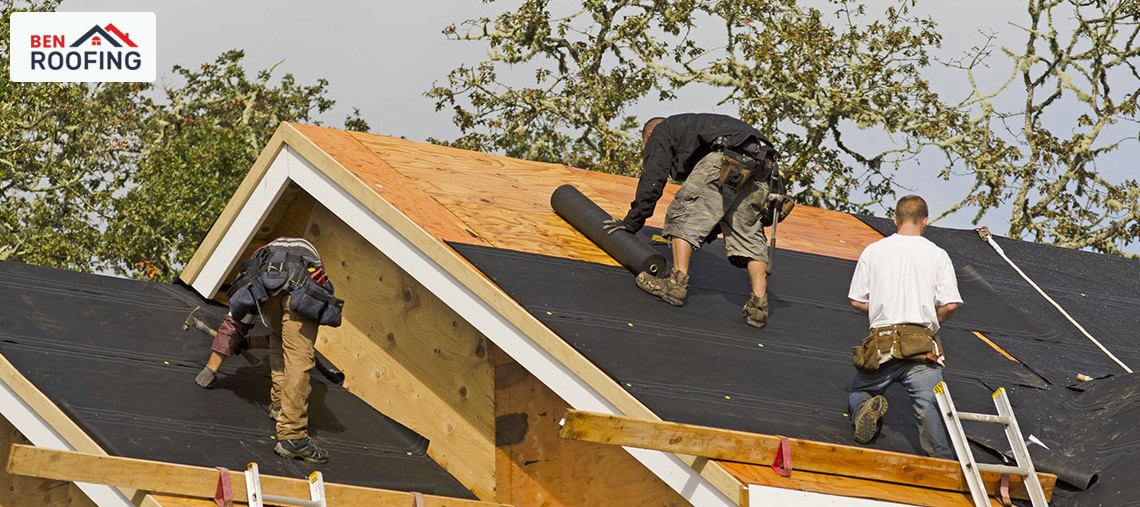Our Glendale residential roof repair services are comprehensive in nature, capable of offering solutions for all issues, minor or major.

| Repair Type | Description | Common Areas Addressed |
|---|---|---|
| Minor Repairs | Minor repairs involve addressing small issues, such as loose or missing shingles, minor leaks, or damaged flashing. | Shingle replacement, flashing repair, small leak fixes, and gutter maintenance |
| Moderate Repairs | Moderate repairs tackle more significant problems, including extensive leaks, damaged underlayment, or sagging roof sections. | Underlayment replacement, roof deck reinforcement, leak detection, and repair. |
| Major Repairs | Major repairs deal with extensive damage, requiring comprehensive restoration or replacement of large sections of the roof | Roof replacement, structural repairs, extensive leak remediation. |
Here are some of the common issues that we help you address with our Glendale residential roof repair services. Ben Roofing will assess your issue and then deliver the right services.
When you call us for Glendale residential roof repair, you get a detailed cost estimate that helps you make a better decision. Here are some of the things that are included in Glendale Residential Roof Repair

Labor: The cost of labor includes the time and expertise required to assess the roof, perform the necessary repairs, and ensure proper installation of materials. Labor costs can vary depending on the complexity of the repair, the size of the roof, and local labor rates.
Materials: The estimate includes the cost of all materials needed for the repair, such as shingles, flashing, sealants, underlayment, and any other required roofing products. The specific materials required will depend on the type of repair and the type of roof being worked on.
Roof Size: The size of the roof is a significant factor in determining the cost estimate. Larger roofs typically require more materials and labor, resulting in a higher overall cost compared to smaller roofs.
Scope of Repairs: The extent of the repair work needed will impact the cost estimate. If the damage is localized and requires minor repairs, the cost will be lower compared to extensive damage that requires more materials and labor.
Roof Type: The type of roof being repaired can influence the cost estimate. Different roofing materials, such as asphalt shingles, metal, tile, or slate, have varying costs. Additionally, certain roof types may require specialized repairs or materials, which can affect the overall cost.
Accessibility: The accessibility of the roof can affect the cost estimate. If the roof is difficult to access or requires special equipment or safety measures, it may increase labor costs.
Additional Factors: Other factors that can impact the cost estimate include the local climate and weather conditions, the need for permits or inspections, any necessary disposal fees for old materials, and the reputation and experience of the roofing contractor.
Signs that indicate your roof may need repairs include leaks, missing or damaged shingles, sagging areas, water stains on the ceiling, excessive granule loss, or visible cracks. It’s advisable to have a professional roofer inspect your roof to assess its condition accurately.
The duration of roof repairs depends on the extent of the damage and the complexity of the repair. Minor repairs can typically be completed within a few hours or a day, while more extensive repairs may take several days. Factors like weather conditions and the availability of materials can also affect the timeline.
If you notice a roof leak, it’s important to take immediate action. Temporarily contain the leak by placing a bucket or plastic sheeting under the dripping area. Then, contact us to assess the source of the leak and perform the necessary repairs.
It depends on your insurance policy and the specific circumstances of the damage. Some homeowners insurance policies cover roof repairs due to certain perils like storms or falling objects. Review your insurance policy and consult with your insurance provider to understand your coverage and file a claim if necessary.